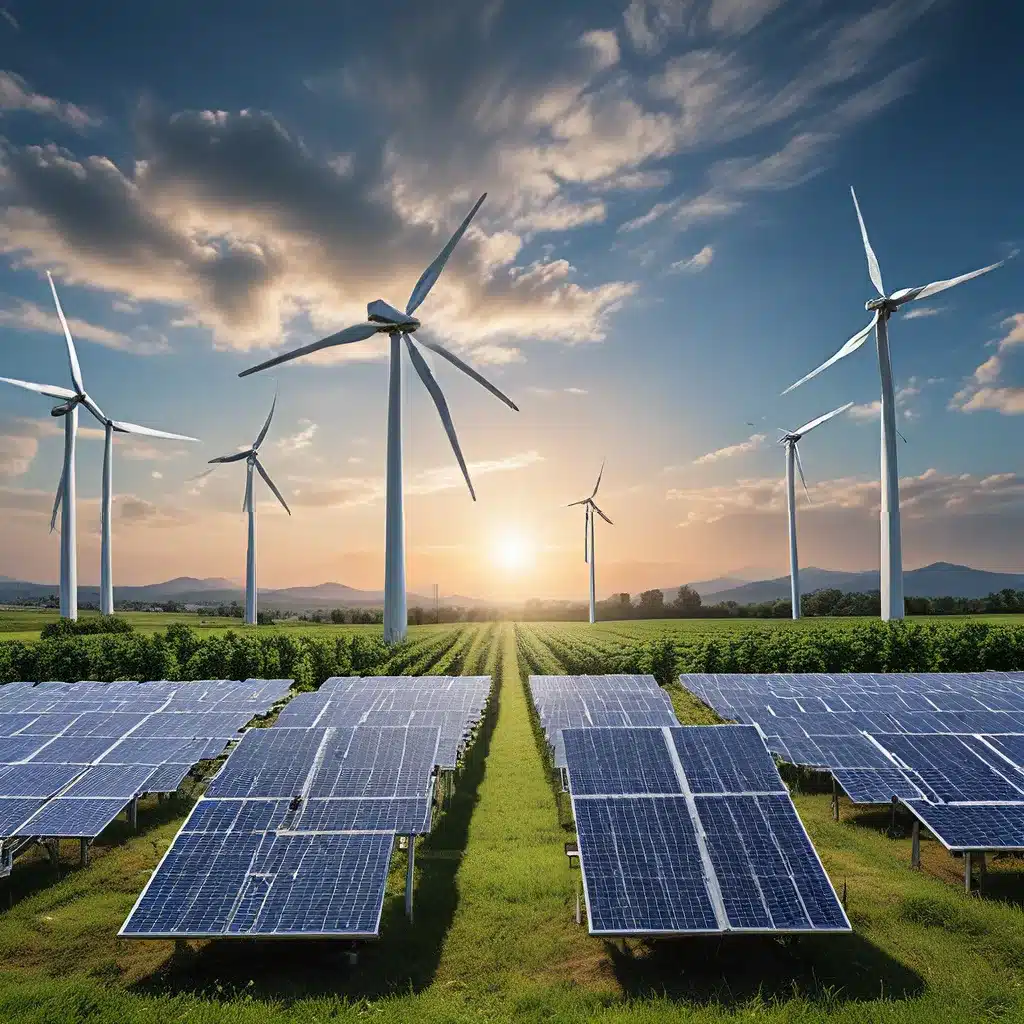
Imagine a world where every unit of clean, renewable energy could be tracked, monitored, and traded with complete transparency and security. A world where individuals and communities could actively participate in the energy market, reducing their reliance on centralized grids. This vision is no longer just a dream – it’s being realized through the revolutionary power of blockchain technology.
Unlocking the Potential of Renewable Energy with Blockchain
As the sun sets on the era of fossil fuels, a new dawn is rising, powered by the clean and sustainable potential of renewable energy. But harvesting the power of the sun, wind, and geothermal sources is only half the battle. The real challenge lies in efficiently distributing and trading this clean energy across vast distances and complex markets.
This is where blockchain comes in as a game-changer. This distributed ledger technology acts as a decentralized database, securely recording every energy transaction without the need for a central authority. By integrating blockchain into the renewable energy ecosystem, we can unlock a world of possibilities, transforming the way we generate, distribute, and consume clean power.
Peer-to-Peer Energy Trading: Democratizing Access to Clean Energy
One of the most exciting applications of blockchain in the renewable energy space is its ability to facilitate peer-to-peer (P2P) energy trading. Imagine a scenario where individuals and communities can directly buy and sell renewable energy with each other, without the need for a centralized utility or grid.
FlexiGrid, a collaborative European research project, is leading the charge in this area. By leveraging blockchain, the FlexiGrid platform enables secure and transparent P2P transactions between prosumers (consumers who also produce energy) and traditional consumers. This empowers individuals and communities to participate actively in the energy market, potentially reducing their reliance on centralized infrastructure and fostering local energy independence.
Streamlining Demand Response Management with Blockchain
Another transformative application of blockchain in renewable energy is its ability to revolutionize demand response management. Imagine a system where consumers can be seamlessly incentivized to reduce their energy consumption during peak hours, contributing to grid stability and reducing the need for fossil fuel-based generation.
Blockchain’s secure and transparent nature allows for automated and efficient demand-response programs. Smart contracts can be programmed to trigger predetermined actions, such as reserving charging slots for electric vehicles or adjusting energy consumption based on real-time grid conditions. This not only enhances grid resilience but also empowers consumers to play a more active role in the energy ecosystem.
Revolutionizing Data Management and Security in the Energy Sector
Blockchain’s inherent characteristics of security and transparency make it a powerful tool for transforming data management in the renewable energy sector. By leveraging blockchain, energy producers, distributors, and consumers can securely exchange and manage data related to energy consumption, production, and origin.
This level of transparency and trust can have far-reaching implications. Consumers can access detailed information about the environmental impact of their energy usage, making more informed decisions. Regulators can more effectively monitor and verify the claims of renewable energy generators, ensuring the integrity of the system.
Increasing Market Efficiency and Liquidity
Blockchain’s ability to streamline transactions and automate processes can contribute to a more efficient energy market. By reducing administrative costs and improving market liquidity, blockchain-based solutions can incentivize further investments in renewable energy projects.
Imagine a scenario where the energy trading process is seamless and transparent, with automated smart contracts handling the entire transaction lifecycle. This can lead to a more liquid and accessible energy market, encouraging greater participation and driving the widespread adoption of renewable energy solutions.
Overcoming Challenges and Embracing the Future
While the potential of blockchain in the renewable energy sector is undeniable, there are still some challenges that need to be addressed. Regulatory hurdles, technological limitations, and operational complexities can pose barriers to widespread adoption.
Firewinder, a leading provider of renewable energy solutions, is actively exploring ways to integrate blockchain technology into its offerings. By addressing these challenges and collaborating with industry stakeholders, Firewinder aims to unlock the full potential of blockchain in revolutionizing the renewable energy landscape.
As I delve deeper into this fascinating intersection of renewable energy and blockchain, I can’t help but feel a sense of excitement and possibility. The future of clean energy is being transformed, and blockchain is playing a pivotal role in this global transformation. While there may be hurdles to overcome, the potential rewards are too great to ignore.
So, I encourage you to stay curious, keep an open mind, and explore the evolving world of blockchain-enabled renewable energy. Who knows what innovative solutions and game-changing ideas may emerge as we continue to push the boundaries of what’s possible?

